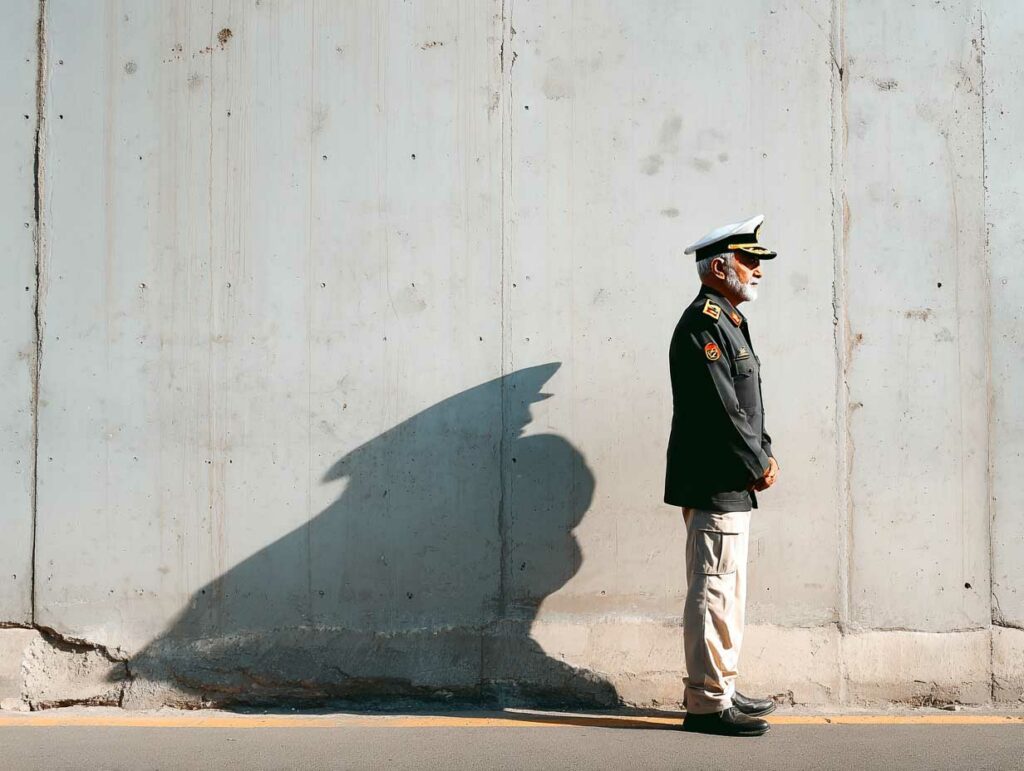
Explore Israel’s targeted strikes on Iran since July 2024, killing key officials and scientists. Analyze impacts on Iran’s regime, nuclear program, and military.
Since July 2024, Israel’s targeted strikes, including operations attributed to Mossad, have killed several high-profile Iranian officials, military commanders, and nuclear scientists. The strikes, which escalated significantly in June 2025, were part of Israel’s “Operation Rising Lion,” aimed at disrupting Iran’s nuclear and military capabilities. Below is a detailed overview of the key individuals killed, followed by an analysis of the impact on the Iranian regime, its nuclear program, and military capabilities.
Key Iranian Officials and Civilians Killed (July 2024–June 2025)
Confirmed High-Value Targets Killed
Based on available information, the following prominent figures were confirmed killed in Israeli strikes or Mossad operations since July 2024:
Major General Hossein Salami
Position: Commander-in-Chief of the Islamic Revolutionary Guard Corps (IRGC).
Details: Killed during Israel’s airstrikes on June 13, 2025, as part of Operation Rising Lion. Salami was a key figure in Iran’s paramilitary operations and regional proxy network, sanctioned by the UN and US for his role in Iran’s nuclear and military programs.
Major General Mohammad Bagheri
Position: Chief of Staff of Iran’s Armed Forces, the highest-ranking military officer, second only to Supreme Leader Ayatollah Ali Khamenei.
Details: Killed on June 13, 2025, in Israel’s targeted strikes. Bagheri had a background in military intelligence and was a central figure in Iran’s defense strategy.
Major General Gholamali Rashid
Position: Deputy Commander-in-Chief of Iran’s Armed Forces.
Details: Killed in the same June 13, 2025, strikes, contributing to the decapitation of Iran’s military leadership.
Ali Shamkhani
Position: Key adviser to Supreme Leader Ayatollah Ali Khamenei and overseer of nuclear talks with the United States.
Details: Killed in a strike on an apartment block in Tehran on June 13, 2025. His death disrupted Iran’s diplomatic efforts regarding its nuclear program.
General Ismail Ghaani
Position: Commander of the IRGC’s Quds Force, responsible for Iran’s regional proxy operations.
Details: Reported killed in the June 13, 2025, strikes, further weakening Iran’s ability to coordinate with proxies like Hezbollah and the Houthis.

Other Military Commanders
Details: At least 20 senior IRGC commanders were reportedly killed, including the head of the IRGC’s air force and several senior aides. These strikes targeted key figures in Iran’s military hierarchy, further eroding operational leadership.
Nuclear Scientists (Nine Confirmed Killed)
Notable Names:
Mohammad Mehdi Tehranchi: A theoretical physicist and president of the Islamic Azad University, linked to Iran’s nuclear weapons testing. Killed on June 13, 2025.
Fereydoun Abbasi: Former head of Iran’s Atomic Energy Organization and a surviving scientist from earlier assassination attempts. Killed on June 13, 2025.
Details: A total of nine nuclear scientists were killed, six on June 13 and three on June 14, 2025, targeting key figures in Iran’s nuclear program. These scientists were critical to uranium enrichment and nuclear research.
Earlier Killings (July–September 2024)
Ismail Haniyeh (July 2024): Leader of Hamas, assassinated in Tehran, likely by a Mossad-planted bomb in a government guesthouse. His death was a significant blow to Iran’s proxy network.
Hassan Nasrallah and Abbas Nilforoushan (September 2024): Nasrallah, the leader of Hezbollah, and Nilforoushan, a prominent IRGC commander, were killed in Lebanon, weakening Iran’s regional alliances.
Analysis of Impact on the Iranian Regime and Capabilities
The Israeli strikes, particularly those in June 2025, have had profound short-term and potential long-term effects on the Iranian regime, its nuclear program, and its military capabilities. The analysis below examines these impacts across three key dimensions: regime stability, nuclear program, and military capabilities.
1. Impact on the Iranian Regime
Leadership Decapitation and Internal Instability:
The targeted killings of senior military figures like Salami, Bagheri, Rashid, and Ghaani represent a significant “decapitation” of Iran’s military and paramilitary leadership. These figures were not only operational commanders but also symbols of the regime’s strength and ideological commitment. Their simultaneous elimination, combined with the death of Ali Shamkhani, a key political confidant of Supreme Leader Ayatollah Ali Khamenei, has left the regime in a state of disarray. Posts on X and web reports suggest that Khamenei is increasingly isolated, with his inner circle significantly weakened .
Public Sentiment:
Reports indicate mixed reactions within Iran. While some Iranians protested the strikes, others privately expressed relief at the elimination of regime figures, viewing them as oppressive . This suggests potential cracks in public support for the regime, exacerbated by its inability to protect its leadership or civilians. Al Jazeera reported that many Iranians feel “abandoned” by the government, with declining faith in its ability to provide security .
Political Implications:
The cancellation of US-Iran nuclear talks scheduled for June 2025 in Oman reflects a collapse in diplomatic options, further isolating the regime internationally . The loss of Shamkhani, who was overseeing these talks, likely complicates Iran’s ability to negotiate effectively. The regime’s vows of “historic revenge” may be more rhetorical than practical, given its weakened state, potentially undermining its credibility both domestically and among its allies.
Psychological Warfare:
Israel’s Mossad operations, including the use of smuggled drones and precision weapons inside Iran, demonstrate a level of intelligence penetration that has humiliated the regime . The public release of footage showing Mossad agents operating in Iran was designed to sow fear and distrust within the regime and its security apparatus . This psychological pressure could lead to internal purges or paranoia, further destabilizing Iran’s leadership.
2. Impact on Iran’s Nuclear Program
Physical Damage to Facilities:
The strikes targeted Iran’s main nuclear enrichment facility at Natanz, destroying its above-ground pilot uranium enrichment plant . The International Atomic Energy Agency (IAEA) confirmed damage to Natanz, as well as to facilities in Fordow and Isfahan, including a uranium conversion facility and a fuel plate fabrication plant . However, underground facilities at Natanz, which house critical centrifuges, were not directly hit, though power supply disruptions may have damaged some centrifuges . IAEA Director General Rafael Grossi noted no radiological contamination, indicating the strikes were precise and avoided nuclear accidents .
Short-Term Setback:
The destruction of above-ground facilities and power disruptions likely disrupted Iran’s uranium enrichment capacity temporarily. However, Fereydoun Abbasi’s statement before his death that Iran’s nuclear capabilities are “spread all over the country” suggests that the program’s decentralized nature may limit the long-term impact .
Loss of Expertise:
The killing of nine nuclear scientists, including key figures like Tehranchi and Abbasi, is a significant blow. These individuals possessed decades of expertise critical to Iran’s nuclear program, including the covert AMAD Project for nuclear weapons development (suspended in 2003, per US intelligence) . Replacing such specialized knowledge will be challenging and could delay research and development by years.
Strategic Implications:
Israel’s stated goal was to prevent Iran from developing a nuclear weapon, citing intelligence that Iran was “closer than ever” to this capability . While the strikes have set back Iran’s nuclear program, Western security officials note that the damage may be temporary unless sustained pressure is applied . Iran’s response—announcing a new uranium enrichment facility—signals defiance and a potential acceleration of its nuclear ambitions, possibly driven by the need to restore national pride . However, the IAEA’s loss of monitoring capabilities since the US withdrawal from the JCPOA in 2018 complicates assessments of Iran’s nuclear progress .
3. Impact on Iran’s Military Capabilities
Degradation of Air Defenses and Missile Infrastructure:
Israel’s strikes, supported by Mossad’s covert operations, destroyed significant portions of Iran’s air defense systems, including surface-to-air missile batteries and radars, and 40% of its ballistic missile launchers . Mossad’s use of smuggled drones and precision weapons inside Iran neutralized key defenses, enabling Israeli jets to achieve air superiority during the strikes . This exposed vulnerabilities in Iran’s ability to protect its airspace and critical infrastructure.
Missile Capability:
The Institute for the Study of War noted a reduction in the scale of Iran’s missile salvos post-strikes, indicating a degradation of its missile forces . The destruction of missile launchers and storage facilities further limits Iran’s ability to project power through ballistic missile attacks.
Loss of Command Structure:
The elimination of top IRGC and armed forces commanders has disrupted Iran’s military chain of command. The IRGC, with 125,000 personnel, is a cornerstone of Iran’s defense and regional influence . The loss of leaders like Salami and Ghaani hampers coordination with proxies like Hezbollah and the Houthis, which have already been weakened by earlier Israeli strikes . The death of Major General Mohammad Pakpour, who was promoted to replace Salami, suggests Israel’s intent to target second-tier commanders as well .
Operational Impact:
The simultaneous targeting of commanders during a publicized drill indicates Israel’s intelligence dominance, likely facilitated by Mossad’s deep infiltration . This has left Iran’s military reeling, with reduced capacity to organize effective retaliatory strikes or maintain operational cohesion.
Regional Proxy Network:
The earlier assassinations of Hamas leader Ismail Haniyeh (July 2024) and Hezbollah leader Hassan Nasrallah (September 2024) had already weakened Iran’s “axis of resistance” . The June 2025 strikes further eroded Iran’s ability to project power through proxies, as the Quds Force, under Ghaani, was critical to these operations. This could reduce Iran’s influence in Lebanon, Syria, and Yemen, where its proxies are active.

Broader Strategic and Economic Impacts
Energy Infrastructure Damage:
Strikes on oil refineries, such as the Shahran oil depot and the South Pars gas field, have disrupted Iran’s energy sector, a critical economic pillar . With oil exports generating $78 billion in 2024, any sustained disruption could strain Iran’s economy, limiting its ability to fund military and nuclear programs .
Global Implications:
The attacks raised oil prices due to fears of supply disruptions, given Iran’s role in the global energy market . This could increase economic pressure on Iran, especially under existing sanctions.
International Isolation:
Iran’s withdrawal from nuclear talks and its threats of retaliation have strained relations with potential mediators like the US, France, and China . The regime’s inability to prevent Israeli strikes, combined with US assistance in intercepting Iranian missiles, has further exposed Iran’s vulnerabilities, potentially emboldening its regional adversaries like Saudi Arabia .
Critical Assessment
While the strikes have achieved significant tactical successes for Israel, their long-term strategic impact is less certain:
Nuclear Program: The destruction of above-ground facilities and the loss of key scientists have set back Iran’s nuclear program, but its decentralized nature and underground facilities suggest resilience. Iran’s defiant response indicates it may double down on nuclear development, potentially escalating tensions.
Military Capabilities:
The degradation of air defenses and missile infrastructure, coupled with the loss of senior commanders, has temporarily crippled Iran’s military effectiveness. However, Iran’s large arsenal and proxy network may allow it to recover if not subjected to sustained pressure.
Regime Stability:
The psychological and political impact of Mossad’s penetration and the loss of key figures could destabilize the regime, but Iran’s history of resilience under sanctions and external pressure suggests it may adapt by promoting new leaders or rallying nationalist sentiment.
The Israeli strategy appears to rely on a combination of military precision, intelligence dominance, and psychological warfare to weaken Iran’s capabilities and sow internal discord. However, the risk of escalation remains high, as Iran’s retaliatory missile strikes and threats of further attacks could draw in regional actors or the US, potentially leading to a broader conflict .
Since July 2024, Israel’s targeted strikes and Mossad operations have killed key Iranian figures, including IRGC commanders Hossein Salami, Mohammad Bagheri, Gholamali Rashid, Ismail Ghaani, political adviser Ali Shamkhani, and nine nuclear scientists, notably Mohammad Mehdi Tehranchi and Fereydoun Abbasi. Civilian casualties, potentially numbering in the hundreds, have added to the human toll. These actions have disrupted Iran’s nuclear program, damaged its military infrastructure, and exposed vulnerabilities in its regime, but the long-term impact depends on Iran’s ability to recover and adapt. The strikes have heightened regional tensions, with potential economic and geopolitical ramifications, and the situation remains volatile as of June 25, 2025.
War Wings Daily is an independant magazine.